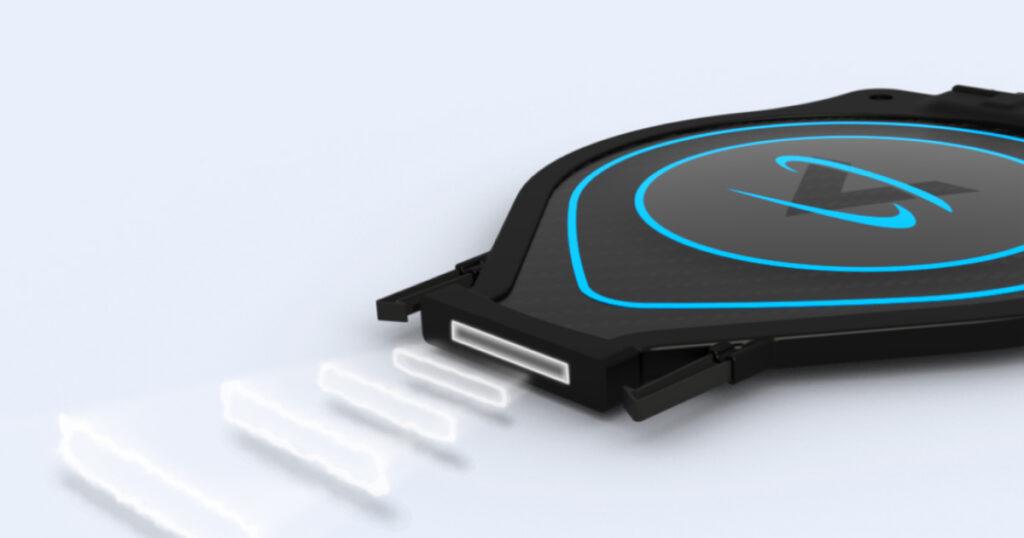
The automotive industry is focused on achieving success in two major
initiatives. The first is electrification, whereby vehicles are all being
upgraded to electric platforms and powertrains. The other is
‘sensorfication’ – the deployment of an increasing number of sensors on the
vehicle to achieve higher levels of advanced driving assistance systems
(ADAS) for safety and efficiency. These are both areas of significant
investment throughout the automotive supply chain as OEM’s transform their
product lines and business models. However, optical sensors (cameras,
Lidars, infrared cameras) that are exposed to weather or harsh conditions
can fail or go “blind” when contaminants, such as rain or mud, are on the
sensor lens. The operational success of the under ADAS system is dependent
on the sensor, and that system can lose function under these conditions,
threatening the commercial potential and the safe operation of vehicles.
Brooklyn, NY-based start-up Actasys has set out to solve this critical
problem in the automotive and mobility industries as the world gets closer
to AoT (Autonomy of Things). Actasys enables higher levels of assisted
driving and safety for automotive OEM’s and Tier-1’s by ensuring optical
sensor operation under adverse weather conditions.
State of the Industry
The automotive industry has begun to recognize the problem of contaminants
on the sensor lens and its impact on capturing visual data. While these
visions systems can ‘see’ into inclement weather, with varying impacts on
data capture, when there is an obstruction on the lens, it causes a
significant impedance of the vision system. This is a relatively new field
and the industry is starting to starting to coalesce around a series of
basic requirements. Firstly, the cleaning system should not obstruct the
lens, therefore preferring air cleaning over a wiper. Second, there is a
need for three elements: air (rain, light soiling), liquid spray (mud,
splatter), and heat (ice and snow) to address all weather conditions.
Finally, it must be power efficient and easy to integrate, which makes
compressors and blowers as an air source much less appealing.
Who is Actasys and what are their innovations?
The company’s patented ActaJetT Sensor Cleaning System is an electronically
controlled system of small actuator cartridges that locally generates strong
jets of air to clean and clear sensors without the need for rotary fans,
compressors, or pumps. The air jet can clear the surface of the sensor lens
and is compact, power-efficient, cost-efficient, and effective. The product
was recognized as a CES 2022 Innovation Award Honoree. The air jet from
ActaJet can also be used to generate a liquid spray as well as heated air..
This positions ActaJet as the only sensor cleaning system that can address
the widest range of environmental conditions and meet the key industry
requirements. It is not mechanical, does not interfere with sensor function,
and has a form factor that makes integration easier..
Why is this important?
The estimated market for automotive sensor cleaning through 2030 is over
$80B, including a projected 630M lidar units to be deployed through 2030.
All of these Lidars require sensor cleaning to achieve their technical and
commercial goals. Therefore, the automotive industry plans and success of
ADAS investments are dependent on technologies such as the ActaJetT system
to efficiently enable itto to achieve a transformation of transportation.
As the field of sensor cleaning is still maturing, OEM’s and Tier-1’s
confront a fundamental question: How clean is clean? Removing a contaminant
from the lens of a sensor is one thing. Doing it at 90kph with different
sensor types, different weather and environmental conditions, and different
shapes and aerodynamic effects is another. Actasys recognized that a
product that has a cleaning and clearing function alone is not sufficient.
They have developed a set of methodologies and technologies to assess the
effects of soiling on a sensor and how to then optimize the use of ActaJet
as a cleaning system. This includes analyzing and quantifying what is on the
lens, under what weather and driving conditions, how it affects the sensor,
and how to clear it.
The combination of the ActaJet system and the knowledge capabilities to
analyze the problem places Actasys in a unique leadership position in this
new sector. And ActaJet is not just limited to the automotive sector.
Visual sensors are proliferating and being used in diverse applications such
as security camera systems, smart cities technologies, robotics, defense,
agriculture and other areas. As ActaJet sits at the intersection of sensors
and novel systems, Actasys’ vision is to utilize and expand upon its
capabilities to enable the future potential of vision systems, including
real-time calibration of sensor and ADAS systems, utilization of weather
information, and generation of data around the sensors that can improve
maintenance, use, and optimization. The industry is already recognizing the
advantages of Actasys’ solution and the company is actively engaged in
commercialization with development relationships with several OEM’s and
Tier-1’s. The company is also backed by leading automotive sector investors
the Volvo Cars Tech Fund and NextGear Ventures.
Miles Flamenbaum, CEO of Actasys











More Stories
Is Your 70 Series Land Cruiser Underperforming? Here’s How to Unleash Its True Potential
What to Do After a Motorcycle Accident to Protect Yourself
Injured in a Motorcycle Crash? Talk to an Attorney Now